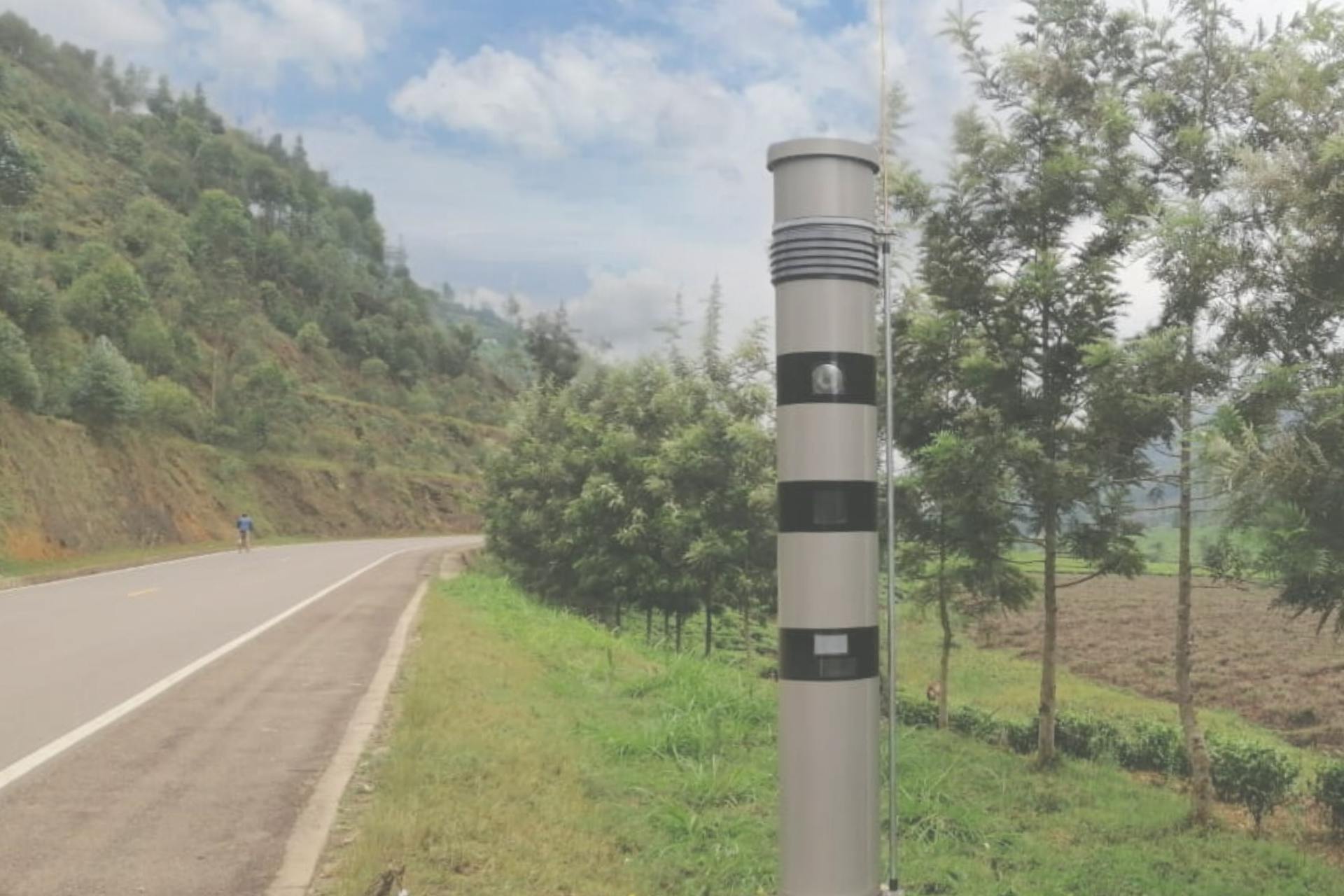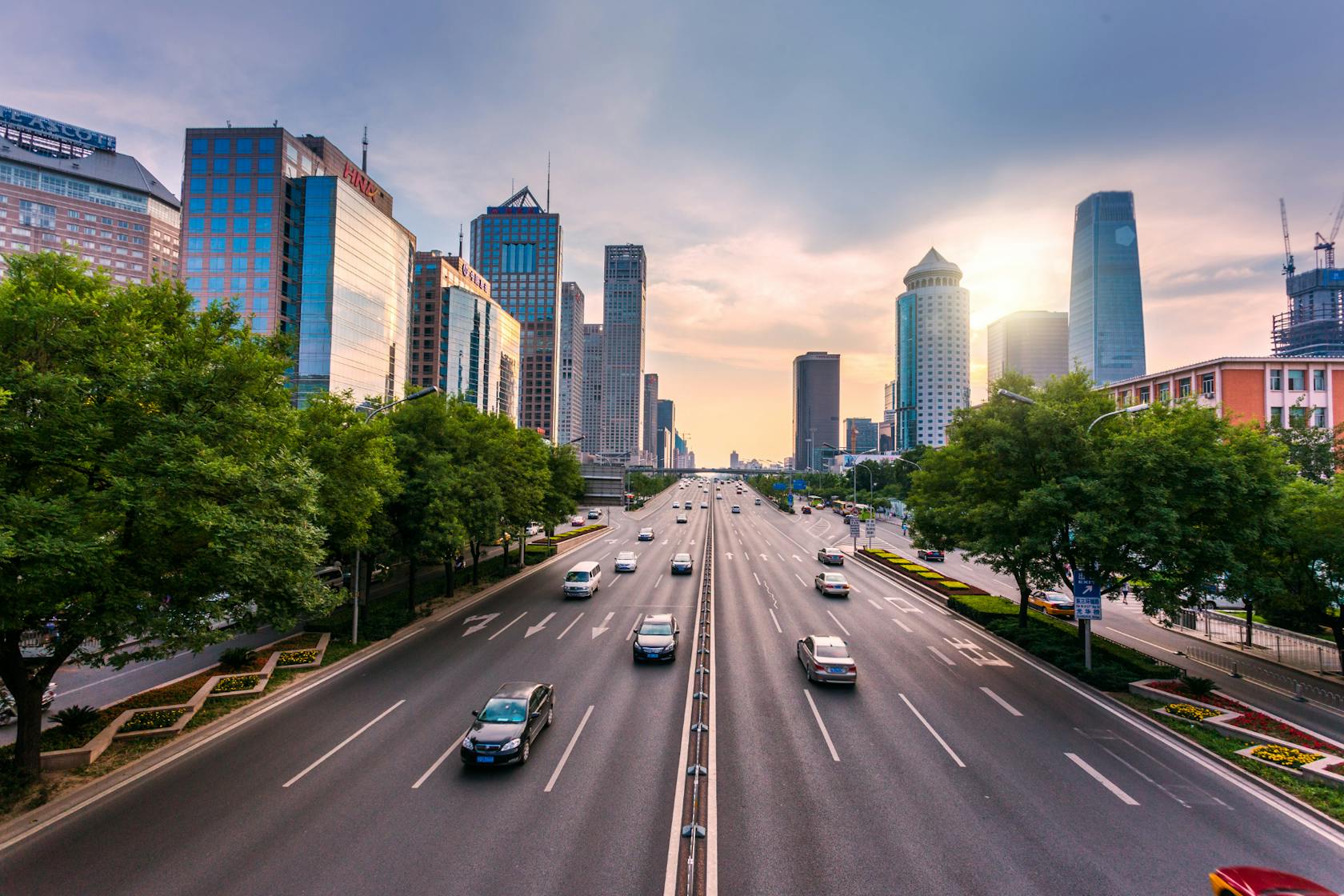
التنقل الذكيدور تطبيق قوانين المرور في تقليل الازدحام المروري وتحسين جودة الهواء
الآثار السلبية للازدحام واستراتيجيات لتحسين البيئة
التأثير السلبي للازدحام المروري على السلامة والاقتصاد والبيئة
الازدحام المروري هو مشكلة عالمية تؤثر سلبًا على السلامة والاقتصاد والبيئة. تؤدي الزيادة في الازدحام إلى زيادة فترات السفر، المزيد من الحوادث، وزيادة استهلاك الوقود. أيضًا، يزداد تلوث الهواء: ذكرت منظمة الصحة العالمية أن تلوث الهواء الخارجي تسبب في وفاة 3.7 مليون شخص على مستوى العالم في عام 2012، حيث حدث معظم تلك الوفيات في البلدان المنخفضة والمتوسطة الدخل. تشكل حركة المرور مساهما كبيرا في تلوث الهواء الخارجي في المناطق الحضرية.
التأثير البيئي للنقل الحضري
تساهم وسائل النقل الحضري بنسبة 40% من انبعاثات ثاني أكسيد الكربون، مع محافظة النقل على الطرق على حوالي 70% من الملوثات الأخرى في الاتحاد الأوروبي. من هذه، في المتوسط، انبعاثات ثاني أكسيد الكربون من سيارات الديزل (127.0 غرام ثاني أكسيد الكربون/كم) تتقارب الآن جدًا مع تلك التي للسيارات البترولية (127.6 غرام ثاني أكسيد الكربون/كم). كان الفرق 0.6 غرام ثاني أكسيد الكربون/كم هو الأدنى الذي لوحظ منذ بداية مراقبة وكالة البيئة الأوروبية.
تساهم انبعاثات ثاني أكسيد الكربون من المركبات في الاحترار العالمي، في حين أن انبعاثات أكاسيد النيتروجين وأول أكسيد الكربون ضارة للصحة البشرية.
نظرا لحركة المرور في الولايات المتحدة، على سبيل المثال، يتضح أنها تسهم في انبعاثات مركبات عضوية متطايرة، أكاسيد النيتروجين، وأول أكسيد الكربون.
استراتيجيات إدارة المرور لتحسين البيئة
قدمت الحكومات والسلطات استراتيجيات إدارة المرور متنوعة لمعالجة هذه المشكلات. تشمل هذه الاستراتيجيات تحسين بنية الطرق، تعزيز النقل العام القائم على الطرق، القيود التشغيلية والتسعير، الحلول التكنولوجية، حملات التوعية، إدارة السرعة، والتحكم في تدفق المرور. ومع ذلك، يمكن أن تختلف فعالية هذه الاستراتيجيات اعتمادًا على الموقع وظروف المرور.
ومع ذلك، قد تكون لبعض استراتيجيات التطبيق آثار جانبية غير مقصودة. على سبيل المثال، قد تؤدي إنشاء مناطق انبعاثات منخفضة (LEZ) لتقييد المركبات في مناطق معينة إلى تقليل الانبعاثات داخل المنطقة ولكنها قد تزيد من حجم الحركة في مناطق أخرى بسبب اختيار السائقين لطرق بديلة. يمكن العثور على أمثلة على هذا السيناريو في دول أوروبية مثل ألمانيا والمملكة المتحدة، حيث تُنفَّذ بالفعل مناطق LEZ.
أنظمة النقل الذكية (ITS) لإدارة المرور بكفاءة
توفر أنظمة النقل الذكية (ITS) تقنيات متقدمة لتقليل تأثير الازدحام المروري. تتضمن ITS تطبيق أجهزة الكمبيوتر، معالجة المعلومات، الاتصالات، وأنظمة التحكم لتعزيز كفاءة وقدرة البنية التحتية الطرقية الموجودة. من خلال تحسين حركة المرور على الطرق، تهدف ITS إلى تحسين السلامة للسائقين، تقليل استهلاك الطاقة، وتحسين جودة البيئة.
تقييم تأثير استراتيجيات تطبيق قوانين المرور
.د. يوسف الهانصالي، المدير التنفيذي لشركة VITRONIC Machine Vision في الشرق الأوسط، هو جزء من معهد بحوث دولي يدرس هذه الظاهرة. قدم الدكتور الهانصالي، كجزء من إحدى دراساته البحثية، نتائج كبيرة في هذا المجال
لتقييم الأثر المحتمل لاستراتيجيات تطبيق المرور في تقليل الانبعاثات المرورية وتحسين جودة الهواء، ركزت الدراسة على ثلاث استراتيجيات نموذجية:
قامت الدراسة بمقارنة التغيرات في جودة الهواء الناجمة عن هذه الاستراتيجيات مقابل خط الأساس (الأفضل أو الأكثر جدوى) السيناريو. يمكن أن تساعد النتائج المشرفين في تحديد الاستراتيجيات الأكثر فاعلية في ظل ظروف الحركة المرورية والموقع المختلفة.
النقاط الرئيسية من الدراسة
- كان تخفيض أول أكسيد الكربون هو الأعلى في سيناريو تقييد السرعة (25.6٪) مقارنة مع سيناريوهات استراتيجيات المناطق منخفضة الانبعاث A2 (0.4٪) و A3 (0.25٪). يبرز هذا فعالية تقييد السرعات في تقليل انبعاثات أول أكسيد الكربون.
- هناك تأثير كبير لاستراتيجيات المناطق منخفضة الانبعاثات في تقليل انبعاثات NOx.
- تبين أن استراتيجيات المناطق منخفضة الانبعاثات فعالة بشكل خاص في تقليل انبعاثات PM10 (PM10 يشير إلى الجزيئات التي يبلغ قطرها 10 ميكرومترات أو أقل. عند استنشاقها، يمكن أن تؤثر هذه الجزيئات على القلب والرئتين وتسبب مشكلات صحية خطيرة). أدى تقديم المناطق منخفضة الانبعاثات إلى تقليل انبعاثات PM10، مما أدى إلى تحسين جودة الهواء.
بشكل عام، تبرز هذه الإحصاءات التأثيرات المتنوعة لاستراتيجيات تطبيق المرور المختلفة على ملوثات معينة. أثبتت تقييدات السرعة فعاليتها العالية في تقليل انبعاثات CO، بينما أظهرت استراتيجيات المناطق منخفضة الانبعاثات تخفيضات كبيرة في انبعاثات NOx، VOC، و PM10. تدعم هذه النتائج أهمية تنفيذ وتطبيق تدابير المرور لتحقيق تحسينات كبيرة في جودة الهواء واستدامة البيئة.
الاستنتاج
يلعب تطبيق المرور دوراً حيوياً في تقليل الازدحام المروري وتحسين جودة الهواء. استراتيجيات إدارة المرور، المدعومة بتطبيق متسق، ضرورية لتحقيق أنظمة نقل حضرية مستدامة. تقدم أنظمة النقل الذكية (ITS) حلولاً مبتكرة لتحسين حركة المرور على الطرق وتقليل التأثيرات البيئية. يمكن أن يساعد تقييم الأثر المحتمل لاستراتيجيات تطبيق المرور باستخدام نماذج الانبعاثات صانعي السياسات في تحديد التدابير الأكثر فعالية لتقليل الانبعاثات المرورية وتحسين جودة الهواء. من خلال الجمع بين استراتيجيات التطبيق الفعالة والتقنيات المتقدمة، يمكن للمدن إنشاء أنظمة نقل أكثر كفاءة وصديقة للبيئة لمستقبل أفضل.
كيف تسهم VITRONIC في الجوانب الهامة
بالنظر إلى التأثيرات التي تخلقها التدابير النشطة لتحسين جودة الهواء، تبقى بعض الأسئلة. بينما يُعتبر الامتثال لحدود السرعة من التدابير التي تساهم في تقليل انبعاثات ثاني أكسيد الكربون من النقل، يجب أن يتم فرض الامتثال لحدود السرعة لضمان تحقيق تلك التأثيرات بالفعل. لضمان امتثال مستخدمي الطرق لقيود السرعة، تسهم أنظمة VITRONIC بدور مهم. يمكن أن تدعم أنظمة تطبيق المرور الثابتة وشبه الثابتة والمتحركة الحكومات في تطبيق حدود السرعة في ظروف مختلفة وتساهم مباشرةً في تقليل تلوث الهواء.
ومع ذلك، يركز تنوع المنتجات الواسع لشركة VITRONIC أيضًا على إنشاء المناطق منخفضة الانبعاثات. تعتبر أنظمة ANPR المتقدمة مستخدمة بالفعل عالمياً لضمان الامتثال للمناطق المخصصة. تعمل الأنظمة المترابطة في بيئة من الأنظمة وقواعد البيانات للإشراف على ما إذا كانت المركبات مسموح بها للوصول إلى منطقة معينة. بالإضافة إلى وظائف ANPR، تقوم أنظمة VITRONIC بتصنيف المركبات بدقة، مما يجعل من الممكن تطبيق العقوبات على الانتهاكات مثل دخول المناطق المحظورة من قبل الشاحنات.
ملخص
بإيجاز
- يؤثر الازدحام المروري سلباً على السلامة والاقتصاد والبيئة.
- استراتيجيات مختلفة مثل مناطق الانبعاثات المنخفضة وتقييد السرعة تهدف إلى تحسين جودة الهواء
- أدت تقييدات السرعة إلى تقليل انبعاثات ثاني أكسيد الكربون بنسبة 25.6٪
- مناطق الانبعاثات المنخفضة فعالة في تقليل أصغر الجسيمات (PM10)
- تخلق تقنية تنفيذ حركة المرور رقابة فعالة على الامتثال للوائح
ملخص
You can edit this slice directly in your code editor.





